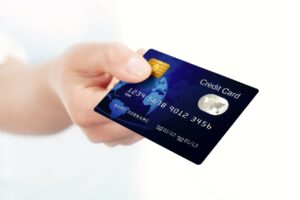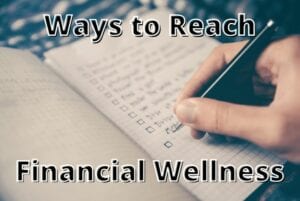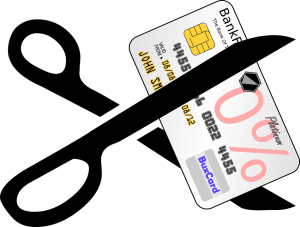You would like some savings as an emergency fund. It would be nice to pay cash for that new barbeque for the deck. Or maybe you want to make a lump-sum payment to pay off debt or a credit card. Whatever the reason, making a big difference quickly in the money you save is difficult. Taking the no-spend challenge could be the way to shift your spending habits enough to meet your current financial goal.
What is the no-spend challenge?
A no-spend challenge focuses on how you’re spending money for a certain period of time – not like a long-term budget. Most often, no-spend challenges span about a month. However, sometimes it takes a shorter or longer period of time to reach a financial goal.
The idea is that you challenge yourself, so you’re only spending money that is absolutely necessary. You’ll still pay your rent, mortgage, and regular bills. Yet, for non-essentials like restaurants, take-out, clothes, Ubers/Lyfts and hair or nail appointments, it is time to take a break. A no-spend challenge eliminates all discretionary spending for a period of time.
Create your own rules for spending money
You may have read about someone else’s no-spend challenge and thought, “That wouldn’t make any difference in my savings. I don’t buy shoes unless I need them, and I never buy coffee out.”
Everyone must make their own “rules” for spending money. There’s no point in setting limits for spending in areas that won’t make a difference in how much money you save. Evaluate your income and spending and decide what could be considered non-essentials for you. Can you live with the number of books in your library for another month? Are you likely to run out of shampoo or nail polish, or are you good for another 30 days? Do you tend to overspend on clothes or shoes? Do you throw away certain types of food, even though you buy them with the best intentions?
Ask trusted friends and family where they think you could pull back your spending habits. Check your bank account and credit card statements. Spend some time decluttering to see if you tend to make repetitive purchases.
Think about how little things add up. What about online shopping, lattes, lunches, and take-out? Did you spend over $100? $500? What would it mean if you could save that and have more in your bank account without earning more money?
Why should you do the no-spend challenge?
Taking the no-spend challenge is like a financial detox. It goes beyond budgeting. You can examine your spending habits for a period of time to see where you are spending money that does not add to your lifestyle. You may decide after 30 days that seeing the extra money in your bank account is worth more than online shopping or other bad spending habits.
One of the best benefits of a no-spend challenge is how it can help you get to the bottom of why you’re spending money. If you keep notes as you navigate the challenge, you may find some spending habits that you may want to drop long-term.
However, even in 30 days, it makes an immediate difference in your emergency, vacation, or credit card debt repayment fund.
How can the no-spend challenge improve your finances?
By refraining from unnecessary spending for 30 days, you improve your finances for the present and the future.
Save money this month – Obviously, if you spend less, you will have more money in your bank account at the end of the month. Saving more moves you closer to your financial goals.
Identify bad spending habits – When you turn on your spending radar, you quickly become aware of how you spend money. As your bank account grows, you start seeing how much money you wasted before.
Clarify financial goals – As you move closer to your financial goal, it becomes easier to maintain the challenge “rules.”
Find new things to do – When you don’t spend time shopping or sitting in restaurants, you find other things to do. Will you bake bread? Plant a garden? Read that book? Or write that novel?
How to do the no-spend challenge right
You’ve decided to take on the no-spend challenge, now what? The first step is to decide to buy only essentials for a fixed period of time. A month is long enough to make a difference in your bank account and give you information about spending habits. It is also a short enough period of time to stay focused.
Decide on the right time and set a goal
Avoid doing a no-spend challenge in the month when your friends are getting married, everyone has birthdays, or while on vacation. The right time may be right now, but if not, plan ahead and set the date.
Write out your financial goal. A general statement of “not spending money” will not keep you motivated all month. Be specific. How much money will you save, and why? Then when you face temptation, you can tell yourself, “No! I am not spending money on that because I want…”
Track spending and temptations in a journal
Keep a spending journal. Note how you feel when you spend money and when you resist the temptation. Reading these entries later will help you learn about your spending habits.
Reduce temptation
If you do online shopping late at night, turn off your computer early in the evening and pick up a book. Delete your credit card information from online shopping sites. If you overspend on shoes, stay out of the mall. Unsubscribe from tempting email lists.
Post your challenge on social media
Stay accountable to friends and family by posting your intentions on social media. Ask others if they want to join you in the challenge, then check in regularly.
Stick to the point
The point of the no-spend challenge is to save some money and get an informative glimpse into your spending habits. Don’t waste all the hard work by spending a whole bunch of money before the challenge or right afterwards.
Conclusion
Customize your no-spend challenge to help you face your spending habits and progress toward your financial goal. Start by planning and analyzing how you are spending money. If your no-spend challenge is not enough to get you out of debt, we can help. Call to speak to one of our Credit Counsellors today.




